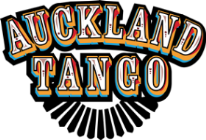Tango Mahi Practica – Tanda of the Week – Milongas from 1936-38 by Juan D’Arienzo Orquesta Tipica
The earliest milonga recording I have heard by a tango orquesta is of Vincente Greco y su Orquesta Tipica Criolla in 1911 playing the tango “Hotel Victoria” with a milonga feel. It featured Vincente’s bandoneon over what sounds like (primarily) a guitar backing rhythm.
Through the following two decades, Carlos Gardel recorded a number of milongas as milongas, usually in a folk music style accompanied by guitars, and the early tango orquestas of Firpo, Canaro, Lomuto and others played many tangos and candombe songs with a two-beat feel but without the milonga characteristics that subsequently became recognised and adored by milongueros, and without identifying any of them as milongas.
The change to the popular danceable milonga evolved during 1932 and 1933 with the 1932 release of a very slow version of the 1931 composition by Sebastian Piana / Homero Manzi composition “Milonga Sentimental”, recorded by Adolfo Carabelli y Carlos Lafuerta, and the 1933 release of the same song by Francisco Canaro with vocalists Ernesto Fama and Angel Ramos, at a tempo about 10% faster than the Carabelli version. Gardel also released a vocals-plus-guitar version in 1933.
The popularity of (especially) the Canaro recordings of “Milonga Sentimental” and “Milonga del 900” (a few months later), led to dozens of new milongas being composed and recorded by many orquestas through the rest of the 1930s. These were embraced by milongueros and the general public, and made fortunes for the record companies, composers and some musicians.
These recordings included:
Canaro
1934 “Yo me llamo Juan te quiero”, “Negrito”
1935 “Larga las Penas”, “Tangon”
1936 “Silueta portena”, “El Porteno”, “Milonga criolla”
1937 “Milonga de mis amores”, “Milonga Triste”, “Milonga de antano”
1938 “Milonga del corazon”, “Historia sentimental”, “La milonga de mis tiempos”, “Milonga Brava”, “Milongon”, “Relinquias portenas”, “Mi Buenos Aires”
1939 “Milonguando”, “La milonga de Buenos Aires”, “No hay tierra como la mia”, “La milonga retobada”, “Milonga clasica”, “Milonga de mi flor”
Donato
1938 “La milonga que faltaba”, “Ella es asi”
1939 “La mimada”, “De puta a punta”, “El torito”
D’Arienzo
1935 “De pura cepa”
1936 “Silueta portena”
1937 “La punalada”, “Milonga vieja milonga”
1938 “El esquinazo”, “Milonga del corazon”, “Estampa de varon”, “Milonga Querida”
1939 “Meta fierro”, Milonga del recuerdo”, “De antano”, “La cicatriz”, “Milonga clasica”, “Milonga de mi flor”
80 to 85 years after those recordings were released, it is rare today to attend a milonga during which three or more of them (or contemporary covers of them) are not played.
For the Tanda of the Week, I have chosen three of the D’Arienzo milonga recordings:
“Silueta portena”
Damien Rosenthal & Vanessa Fatauros applying an extensive repertoire of steps to match the phrases throughout the milonga.
“La Punalada”
Maestros Carlitos Espinoza & Noelia Hurtado dancing with speedy footwork, and good musicality that highlights the syncopations in the music.
“Estampa de varon”
Auckland-based milongueros Stephan and Era Resch performing an all-round impressive milonga at Maida & Davids’ Zanaboni Milonga in Parnell, Auckland.

